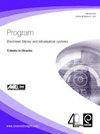A heuristic evaluation to support the instructional and enjoyment aspects of a math game
Q Social Sciences
Program-Electronic Library and Information Systems
Pub Date : 2017-11-08
DOI:10.1108/PROG-07-2016-0050
引用次数: 8
Abstract
Purpose The purpose of this paper is to provide information about the design principles of educational games in the context of an educational math game example to educational game developers and instructors. Especially, it tries to demonstrate the importance of the academic content-fantasy integration and entertainment factors of educational games from the viewpoint of the experts. For this purpose, as a sample, an educational math game was examined to see how successful is the academic aspect, fantasy aspect, academic-fantasy aspects integration and enjoyment aspect of the game. Good aspects of the game and aspects need improvement were summarized for guidance to game developers while producing educational games. Design/methodology/approach In this study, heuristic evaluation method was used for evaluating the educational math game. In the scope of this study, an example of modern educational computer game was examined by experts in this study. The integration of academic-fantasy context and enjoyment aspects of the game were analyzed deeply by using qualitative and quantitative data collection methods together. Findings According to Relevance Embedding Translation Adaptation Immersion and Naturalization rubric results, embedding element received the highest mean score. It showed that the academic content is well coupled with the fantasy/story content. According to GameFlow criteria, clear goals and feedback sections got the highest scores; on the contrary immersion section got the lowest score. Immersion element of the game should be improved. According to the interview findings, more than half of the participants stated that, in terms of academic content of game, players can actively be involved in learning process during the game. The story of the game and elements used in the game have counterpart in daily life. Didactic elements do not affect learners’ flow in the game. It is easy to learn and feedbacks are enough and useful. Originality/value This study offered suggestions to designers for developing good educational games which are well balanced with academic and fantasy context.一个启发式的评估,以支持数学游戏的教学和享受方面
目的本文的目的是在教育数学游戏示例的背景下,为教育游戏开发人员和讲师提供有关教育游戏设计原则的信息。特别是,试图从专家的角度论证教育游戏的学术内容幻想整合和娱乐因素的重要性。为此,作为一个样本,我们对一款教育数学游戏进行了测试,以了解游戏的学术方面、幻想方面、学术幻想方面的整合和享受方面有多成功。总结了游戏的好的方面和需要改进的方面,以指导游戏开发商在制作教育游戏时。设计/方法论/方法本研究采用启发式评价方法对教育数学游戏进行评价。在本研究的范围内,专家在本研究中检查了一个现代教育计算机游戏的例子。通过定性和定量的数据收集方法,深入分析了游戏的学术幻想背景和享受方面的融合。研究结果根据关联嵌入翻译顺应性浸入和归化量表的结果,嵌入元素的平均得分最高。这表明学术内容与幻想/故事内容是很好的结合。根据GameFlow标准,清晰的目标和反馈部分得分最高;相反,浸入段得分最低。游戏的沉浸元素应该得到改进。根据访谈结果,超过一半的参与者表示,就游戏的学术内容而言,玩家可以在游戏中积极参与学习过程。游戏的故事和游戏中使用的元素在日常生活中有对应关系。教学元素不会影响学习者在游戏中的流畅性。这很容易学习,反馈也足够有用。创意/价值这项研究为设计师开发良好的教育游戏提供了建议,这些游戏与学术和幻想环境相平衡。
本文章由计算机程序翻译,如有差异,请以英文原文为准。
求助全文
约1分钟内获得全文
求助全文
来源期刊

Program-Electronic Library and Information Systems
工程技术-计算机:信息系统
CiteScore
1.30
自引率
0.00%
发文量
0
审稿时长
>12 weeks
期刊介绍:
■Automation of library and information services ■Storage and retrieval of all forms of electronic information ■Delivery of information to end users ■Database design and management ■Techniques for storing and distributing information ■Networking and communications technology ■The Internet ■User interface design ■Procurement of systems ■User training and support ■System evaluation
 求助内容:
求助内容: 应助结果提醒方式:
应助结果提醒方式:


